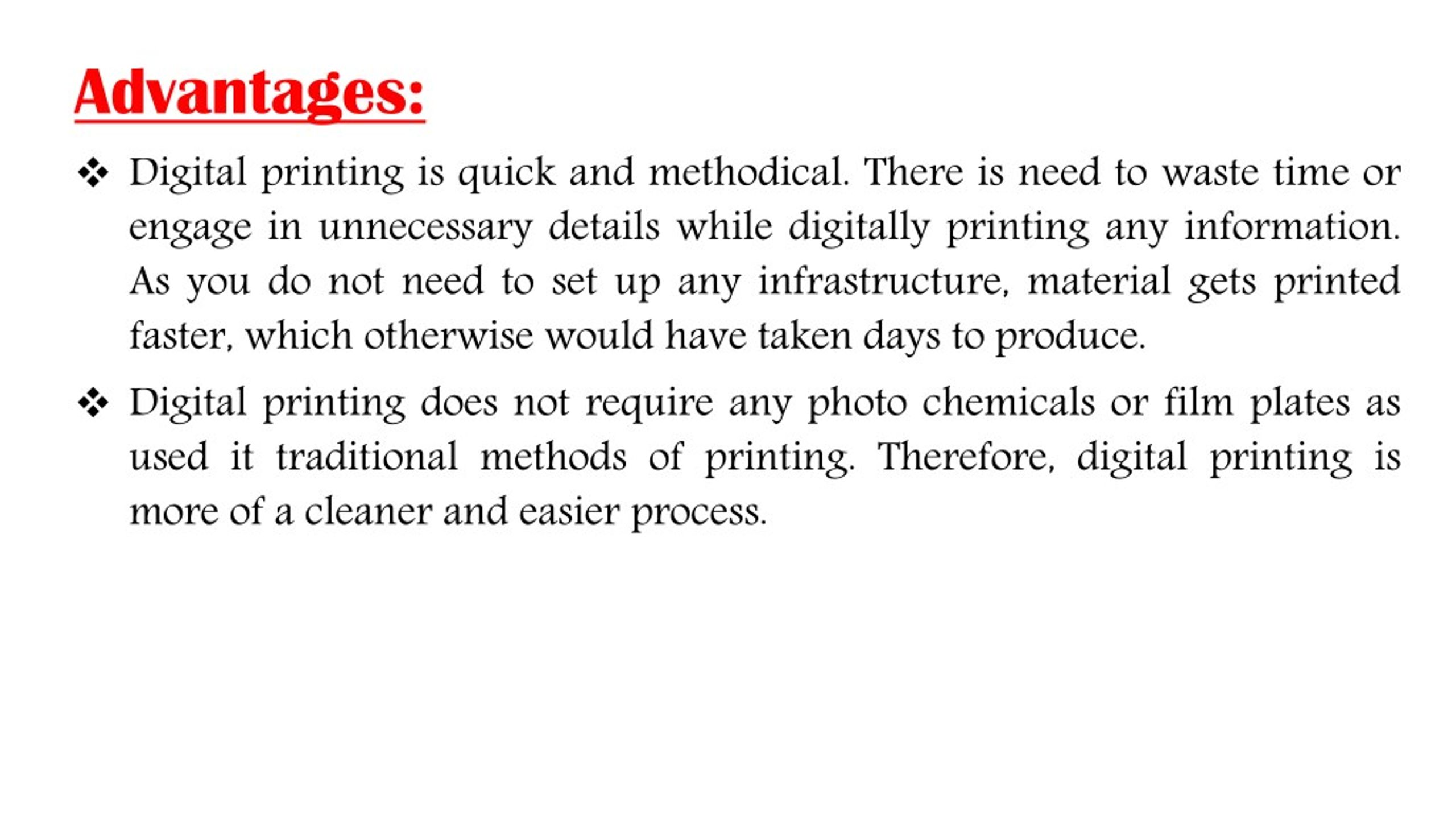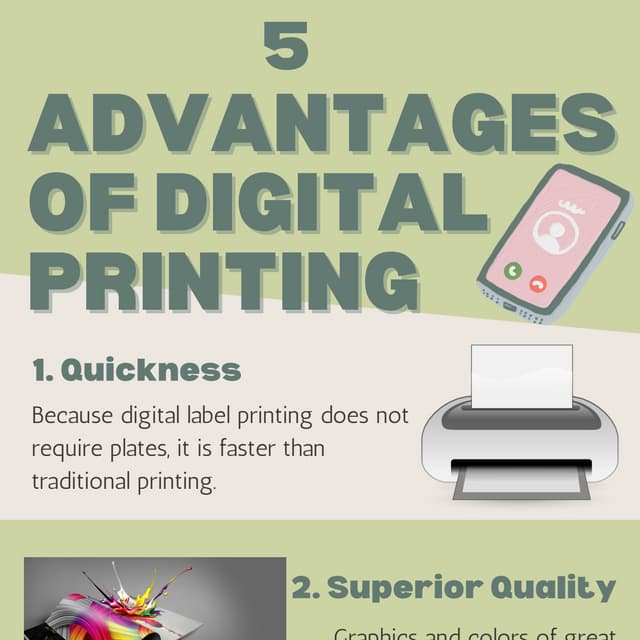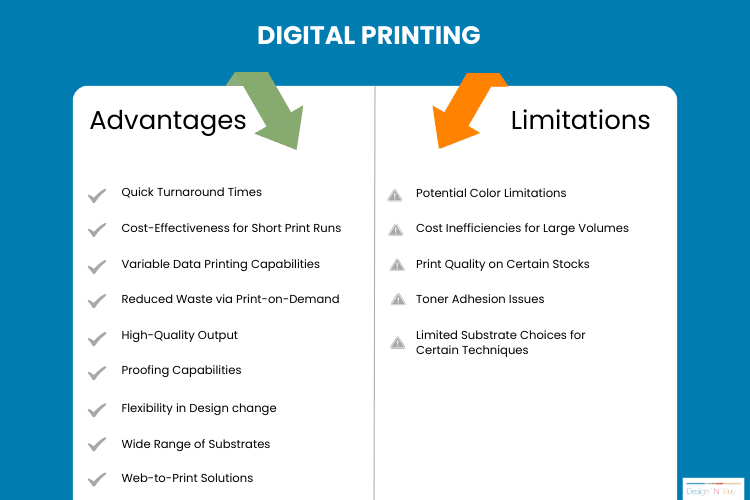The Digital Printing Statements
Table of ContentsNot known Details About Digital Printing Little Known Facts About Digital Printing.Some Known Details About Digital Printing All about Digital PrintingFascination About Digital PrintingWhat Does Digital Printing Do?
Variable data printing, such as straight mail with individualized codes and addresses, is ideally suited for digital printing. Digital fast printing just needs 4 actions of style, testimonial, printing and binding to get every little thing done. Digital quick printing has an unparalleled advantage: print on need.According to PMMI, digital printing allows brands and suppliers to react swiftly to customer demands while boosting the supply chain, lowering warehousing price and waste, and enjoying faster time to market. That all audios great, but just how does this modern technology do all that? The significant differentiator of these innovations is that there are no set up charges and no plates with digital printing.
The 9-Minute Rule for Digital Printing
According to Wikipedia, the biggest difference in between digital printing and typical techniques such as lithography, flexography, gravure, or letterpress - Digital Printing is that there is no requirement to replace printing plates in electronic printing, whereas in these analog printing methods the plates are repetitively replaced. This leads to quicker turn-around time and decreases cost when using electronic printing.
Speedy manufacturing implies getting your item to market much faster. It additionally implies it's simpler and faster to make adjustments later, when you change a recipe, add a SKU, or produce seasonal product packaging. Digital printing is extremely versatile, so it's simple to make modifications to the plan design swiftly. All of it returns to the plates.
With conventional printing methods, short-run printing is simply not feasible. Due to the fact that a wonderful layout can make or break your item, electronic printing consistently creates high-quality, clear and colorful graphics each time.
Digital printing is the process of printing digital-based photos straight onto a variety of media substratums. There is no need for a printing plate, unlike with balanced out printing. Digital data such as PDFs or desktop posting files can be sent out straight to the digital printing press to print theoretically, image paper, canvas, material, synthetics, cardstock and other substrates.
Digital Printing Fundamentals Explained
According to PMMI, electronic printing allows brands and manufacturers to respond quickly to consumer needs while enhancing the supply chain, lowering warehousing price and waste, and delighting in faster time to market. That all noises fantastic, however just how does this technology do all that? The major differentiator of these modern technologies is that there are no set up site fees and no plates with digital printing.
According to Wikipedia, the biggest difference between electronic printing and standard methods such as lithography, flexography, gravure, or letterpress is that there is no requirement to replace printing plates in digital printing, whereas in these analog printing approaches the plates are repeatedly replaced. This results in quicker turn-around time and decreases price when using digital printing.

The smart Trick of Digital Printing That Nobody is Discussing
With traditional printing approaches, short-run printing is simply not possible. Due to the fact that a fantastic style can make or break your item, digital printing regularly produces premium, clear and vivid graphics each time.

According to PMMI, digital printing enables brand names and makers to respond swiftly to consumer needs while improving the supply chain, lowering warehousing price and waste, and delighting in faster time to market. That all sounds great, but just how does this innovation do all that? The significant differentiator of these technologies is that there are no set up fees and no plates with electronic printing.
Digital Printing - Questions
According to Wikipedia, the greatest difference between electronic printing and traditional approaches such as lithography, flexography, gravure, or letterpress is that there is no demand to replace printing plates in digital printing, whereas in these analog printing techniques home plates are repetitively replaced. This leads to quicker turnaround time and decreases cost when utilizing digital printing.
Digital printing is highly versatile, so it's simple to make modifications to the package design promptly. It all goes back to the plates.

Digital Printing Can Be Fun For Everyone
Digital printing is the process of printing digital-based pictures straight onto a selection of media substrates. There is no demand for a printing plate, unlike with balanced out printing. Digital documents such as PDFs or desktop posting data view website can be sent out straight to the electronic printing machine to print on paper, photo paper, canvas, textile, synthetics, cardstock and other substratums.
Comments on “The Best Strategy To Use For Digital Printing”